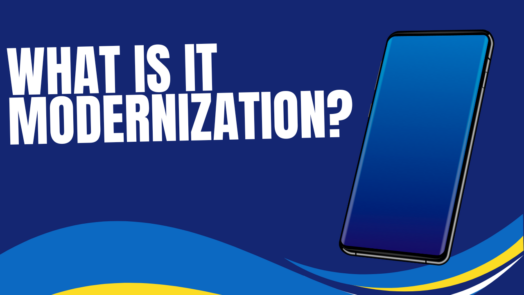Wireless Network Security: 5 Important Considerations
Going wireless isn’t as simple as purchasing a router and setting it up. Wireless technology is much more complicated than it was even a few years ago. Why is this? It’s because healthcare businesses are using so many different types of wireless devices today.

Secure Wireless Networks For Medical & Healthcare Organizations
There are a number of different considerations when setting up a proper wireless network for your medical facility. We’ll discuss the 5 most important ones here.
First… It’s important that you understand the meaning of a few terms:
Wi-Fi: This is a type of wireless network technology that’s used for connecting to the Internet. The frequencies of 2.4Ghz or 5Ghz ensure that there’s no interference with cell phones, broadcast radios, TV antennas or two-way radios. Wi-Fi sends radio waves from a router and sends data back to the router. It works over longer distances using a low-power unobtrusive technology. This makes it suitable for use with laptops.
Wi-Fi Direct: This is a communication standard that facilitates device connections without using wireless access points (WAPs) like a router. The devices are connected using Wi-Fi. Wi-Fi Direct is vendor-neutral meaning devices from separate manufacturers can connect. It’s available in smartphones and tablets. It allows device-to-device communications much as Bluetooth does.
Bluetooth: This is wireless technology that’s used to exchange data between mobile devices over short distances (less than 30 feet). You use Bluetooth when you want to connect your smartphone or Bluetooth-enabled mobile device to communicate with other Bluetooth devices like printers or headsets. Think of it as an invisible cord between two devices.
Secure Wireless Network Considerations
What 5 Things Should You Consider To Make Sure You Have A Proper Wireless Network For Your Medical Facility?
1. Data Throughput
This is the speed that your wireless technology provides. If fast data speed is important to you, then using Wi-Fi or Wi-Fi Direct will be best for your business.
For example:
- Wi-Fi and Wi-Fi Direct provide 100-250 Mbps of throughput.
- Bluetooth Classic provides 2-3 Mbps of throughput.
- Bluetooth Low-Energy provides 1Mbps of throughput.
Ensure that you have the wireless technology you need for the devices you want to use. If you’re going to stream video in your office, you’ll need a high-speed wireless connection like Wi-Fi or Wi-Fi Direct.
WiFi and WiFi Direct have a maximum data transfer speed of around 10x that of Bluetooth Classic. Bluetooth Low-Energy (BLE) throughput is approximately half as fast as Classic. It’s applicable for sending small amounts of intermittent data like temperature, humidity and GPS coordinates, and is suitable for IoT (Internet of Things) devices. However, if you want a constant data transfer, you should use Bluetooth Classic.
You can transmit a constant stream of audio with Bluetooth Low Energy as long as you have a custom BLE firmware for this purpose. But you’ll have a better quality of sound with Bluetooth Classic.
2. Operating Distance
Both Wi-Fi and Wi-Fi Direct can transmit data up to 200 feet. Bluetooth Classic and Bluetooth Low Range have a maximum range of 60 feet. You can add range extenders to your Bluetooth and obtain up to 1,500 feet for BLE and 3,000 feet for Bluetooth Classic.
There are different classes of Bluetooth transmitters. The majority of Bluetooth products use a class 2 transmitter with an operating range of around 50 feet. But it’s possible also to use a class 1 transmitter which has a range closer to 300 feet (100 meters).
These ranges are within line of sight without obstructions. And keep in mind that the higher power outputs reduce battery life.
3. Power Usage vs. Battery Life/Size
Keep in mind that the higher power outputs and greater transmission ranges equate to reduced battery life. So, keep this in mind if battery life and size is important to you.
BLE is best for very low-power uses like IoT devices. These typically run on small watch batteries. They can do this because BLE only transmits data occasionally, for example for 1 second for every 60 seconds.
4. Smart Phone Needs
If your staff uses older smartphones, then you’ll need either Wi-Fi or Bluetooth Classic. A newer smartphone can use BLE or Wi-Fi Direct.
For example:
Apple iOS —
All versions can use Bluetooth Classic or Wi-Fi.
Versions 4S+ need BLE (Bluetooth Low-Energy).
Versions 5S+ can use Wi-Fi Direct.
Google Android —
All versions can use Bluetooth Classic or Wi-Fi.
Versions 4.3+ need BLE.
Versions 4.0+ can use Wi-Fi Direct.
5. Cyber Security
Wi-Fi, Wi-Fi Direct, Bluetooth Classic and BLE all provide a high level of security. But Wi-Fi and Wi-Fi Direct are more secure with 256-bit encryption. Bluetooth Classic and BLE only provide 128-bit encryption. So, if security is a priority, then you want to go with Wi-Fi or Wi-Fi Direct.
Here Are Few More Important Points…
As a Managed IT Service Provider who specializes in Wireless Networking for medical facilities in Massachusetts, Radius Executive IT Solutions can ensure that you’ll have a properly designed, managed, secured and supported wireless network with wireless access points and controllers.
It all starts with a site survey, wireless scan and network scan to:
- Determine optimal network design for performance needs,
- Identify sources of interference, and
- Ensure proper settings to deliver the best end-user experience.
Properly designed networks provide secure and segmented access based on user needs (visitor, functional departments) with access managed to only authorized areas based on role.
We also provide ongoing management and monitoring to respond to changes in the wireless environment and fluctuations in user demand.
Setting Up A Secure Wireless Network
For more information or a wireless assessment for your healthcare facility MA, contact Radius Executive IT Solutions at (978) 528-0110 or info@radiusits.com.
In the meantime, stay up-to-date on important news and happenings in IT for healthcare providers. Visit our Blog. We publish new articles each month. Here are a few examples to get you started.
Is Your Boston Area IT Company Helping Protect Your Healthcare Organization From Phishing Attempts?





